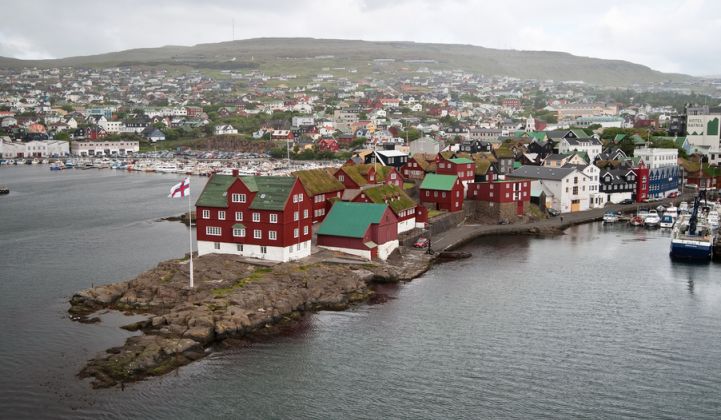A utility serving the Faroe Islands has confirmed plans for a major lithium-ion battery project to help balance wind generation.
The project may spur another battery four to five times bigger, according to the utility, SEV.
“We are looking into other battery projects, but in order to serve different ancillary services like spinning reserve, frequency support, etc.,” SEV project manager Terji Nielsen told Greentech Media.
According to Nielsen, SEV is paying “in the region of €2 million,” or USD $2.15 million, for what Paris-based battery supplier Saft billed as “Europe’s first commercial deployment of a Li-Ion ESS [energy storage system] supporting the operation of a wind farm."
Nielsen said the price per megawatt for the Saft project was €900,000 (USD $966,000), which is less than a third of the amount paid for a U.K.-based battery system commissioned last November.
Saft will be installing two Intensium Max containerized Li-ion battery systems, totaling 2.3 megawatts and 700 kilowatt-hours, to provide ramp-rate smoothing and local frequency control for a 12-megawatt wind farm in Húsahagi, near the Faroese capital of Tórshavn.
The wind farm is made up of 13 turbines supplied by the German manufacturer Enercon. The project also features a 2.3 megavolt-ampere containerized power conversion and control system for the battery arrays.
“This will minimize the short-term fluctuations from the wind farm, and hence allow even more wind to be integrated in the power system,” Nielsen said.
The Faroe Islands, a self-governing country of 18 isles within the Kingdom of Denmark, aims to get 100 percent of its electricity from renewable sources by 2030. “Most likely, wind energy will be a predominant resource in order to reach this goal,” said Nielsen.
Until 2011, the Faroe Islands relied on 67 megawatts of diesel generation from more than 10 thermal generators and 31 megawatts from nine hydro plants, with a mere 4 megawatts of wind power from seven wind turbines.
The Húsahagi wind farm has helped boost the level of wind power in the system to 24 percent, with 48 percent of the balance coming from hydro and 29 percent from fossil fuels, according to SEV.
But the utility, which has a monopoly position in the Faroe Islands, is acutely aware of the need to maintain grid stability in the face of increasing wind power penetration.
In particular, the need for ramp-rate smoothing is key, because wind speeds can reach storm levels within a matter of minutes, said Philip Hiersemenzel, spokesperson for Younicos, an energy system supplier familiar with the market.
The extreme conditions for wind power on the islands were illustrated in 2012 when hurricane-force winds wrecked all of the three Vestas 660-kilowatt turbines installed in SEV’s first wind farm, in Neshagi.
That experience prompted SEV to switch from Vestas machines to more sturdy Enercon models. Five of these went up in Neshagi before work began on the Húsahagi project.
While the Saft deployment will take care of ramp rates at Húsahagi, it likely will not be enough to allow a significantly larger penetration of wind, said Hiersemenzel.
“They also need to be able to supply frequency control, because that would allow them to shut off the diesel,” he said.
Meanwhile, the country is also implementing demand response systems and pondering hydrogen-and-wind combinations.
The Faroe Islands belong to the North Atlantic Hydrogen Association, along with Iceland, Norway and Greenland. The government has also looked at projects on the islands of Stóra Dímun and Nólsoy. Neither of these appears to have moved forward, however.
It remains to be seen whether hydrogen storage will find a niche in the Faroe Islands. Batteries, with their rapidly falling costs and increasing track record, look set to play a major part in the country’s energy future.
The Saft battery system is scheduled for commissioning in December.



